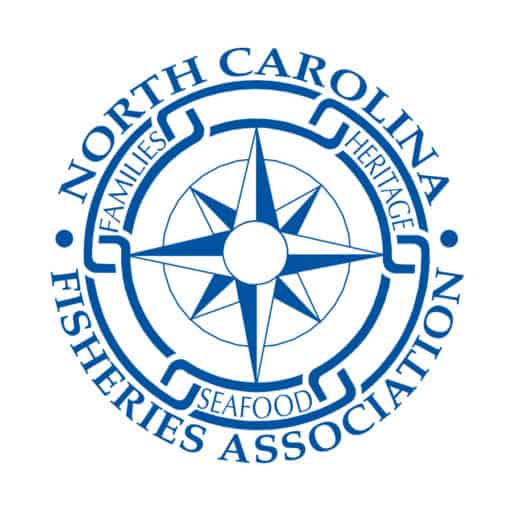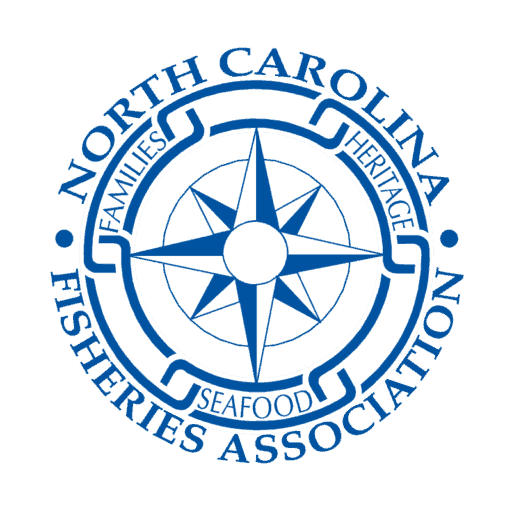Another Example of More for Me From ASGA
This past week the Atlantic States Marine Fisheries Commission (ASFMC) began holding public hearings for Draft Addendum I to Amendment 7 of the Atlantic Striped Bass Fisheries Management Plan (FMP). Importantly, this FMP only pertains to Striped Bass caught in the Atlantic Ocean and should not be confused with NC Estuarine Striped Bass which is regulated by the North Carolina Division of Marine Fisheries (NCDMF).
Draft Addendum I is looking at considering voluntary commercial quota transfers of ocean Striped Bass quota. Many other ASFMC managed species already have commercial quota transfer mechanisms in place, but the ocean Striped Bass FMP does not. Since North Carolina commercial fishermen (we hold 12.6% of the total Atlantic Ocean commercial quota) have not harvested any ocean Striped Bass since 2012 there has been over 3,000,000 pounds of unused ocean Striped Bass commercial quota from our state alone. And as a fisherman who used to participate in this fishery, I know these fish are not swimming back to NC any time soon!
So, it should be a no brainer that we let our commercial fishing neighbors to the north get a chance to use this quota. Commercial fishermen, especially ones harvesting Striped Bass are held very accountable. All states that participate in the ocean Striped Bass fishery require a tag on every commercially caught fish! The commercial harvest has remained stable (remained well inside our allocated quota) over the past few years ranging from 577,363 to 653,807 fish annually with commercial discards of 65,319 to 100,646 annually from 2015-2020. Commercial landings accounted for 8-12% of the total ocean Striped Bass removals in this time period whereas commercial dead discards accounted for 1-2%.
Yet although the science points to how easy of a decision this is, the American Saltwater Guide Association (ASGA) has sent out a “Call to Action” to get their members to comment against it. Their call to action conveniently does not tell their members who is catching what. They only want to make sure opportunity is capped and that unused quota is not accessible to commercial fishermen.
Nowhere in their action do they mention how New Jersey does not allow commercial harvest of Striped Bass and that the commercial quota allocation of 215,952 pounds (8.5% of total commercial quota) is given to the recreational sector every year to harvest! They also failed to mention how the recreational sector harvested 1,709,983 to 3,500,434 Striped Bass annually from 2015-2020 and accounted for 2,307,133 to
3,421,110 dead discarded fish annually in the same time period!
That is a recreational harvest accounting for 33% to 51% of total Striped Bass annual removals and recreational dead discards accounting for 38% to 54% of all Striped Bass annual removals in this time period! And during the 2015 to 2020 time period, recreationally harvested Striped Bass averaged 11.7 pounds while commercially harvest Striped Bass averaged 7.4 pounds. So if you convert all of those fish numbers over to pounds, recreational percentages of pounds harvested would rise even more over the commercial landings in pounds.
Another set of numbers the American Saltwater Guides Association failed to include in their “Call to Action” was recreational release numbers. From 2015 to 2020 recreational anglers released from 25,989,334 to 41,732,867 numbers of Striped Bass annually. And another number used in this Draft Addendum was the recreational dead discard percentage of 9%. Meaning 9% of those tens of millions of Striped Bass caught annually died after they were released.
Now back to the purpose of the ocean Striped Bass Draft Addendum I to Amendment 7. The purpose of this addendum is to allow states the opportunity to voluntarily transfer Atlantic Ocean Striped Bass quota. Most of the unused quota is from North Carolina. The 2022 North Carolina Ocean Striped Bass quota was 295,495 pounds (or if you use the average of 7.4 pounds, 39,932 individual fish). Remember again, North Carolina has not landed an ocean caught Striped Bass in ten years.
Why in the heck does the American Saltwater Guide Association think that if the commercial sector is allowed to harvest another 40,000 fish that the Striped Bass population will suddenly collapse? I guess they think fish managers are too dumb to know that if 40,000 extra dead fish are going to stop a stock from rebuilding then there are a lot bigger problems within the fishery!
In fact, if ASGA would convince their supporters to stop targeting Striped Bass I’m sure they would save many more than 40,000 fish! Heck if they could help lower recreational dead discard mortality by 1% it would save an additional 250,000 to 400,000 Striped Bass a year! What a win for Striped Bass that would be!
Why do groups like ASGA keep stepping on and pointing fingers at commercial fishermen without holding themselves accountable? Do they not see these numbers? Do they not see the hypocrisy?
No, these numbers are in the stock status reports. Groups like ASGA read these stock status reports front to back. These numbers are not secret. Groups like ASGA just continue to pick and choose what they want people to know and continue to lie to the public. That is why NCFA is here, to also read these reports and then tell the truth and lay out ALL the numbers and facts to tell the whole story.
The ASMFC is holding public hearing on Draft Addendum I over the next couple weeks via webinar. I attended one of these meetings last week and sure enough ASGA and their members were there spreading their lies and commenting against allowing commercial fishermen to rightfully harvest their allocated quota while taking no responsibility of their own sectors actions. If you have time, I encourage you to listen in one evening and give verbal or written comments. It’s beyond time to speak up against groups like the American Saltwater Guides Association.
Thomas Newman
Fisheries Liaison
Webinar Instructions
For all virtual hearings (except Delaware), please note that in order to comment during virtual webinar hearings you will need to use your computer or download the GoToWebinar app for your phone. Those joining by phone only will be limited to listening to the presentation and will not be able to provide input. In those cases, you can send your comments to staff via email or U.S. mail at any time during the public comment period. To attend the webinar in listen only mode, dial 213.493.0005and enter access code 199-116-984.
For all virtual hearings (except Delaware), please click HERE and select the hearing(s) you plan to attend from the dropdown menu to register for a public hearing webinar. Hearings will be held via GoToWebinar, and you can join the webinar from your computer, tablet or smartphone. If you are new to GoToWebinar, you can download the software by (clicking here) or via the App store under GoToWebinar. We recommend you register for the hearing well in advance of the hearing since GoToWebinar will provide you with a link to test your device’s compatibility with the webinar. If you find your device is not compatible, please contact the Commission at info@asmfc.org (subject line: GoToWebinar help) and we will try to get you connected. We also strongly encourage participants touse the computer voice over internet (VoIP) so you can ask questions and provide input at the hearing.

